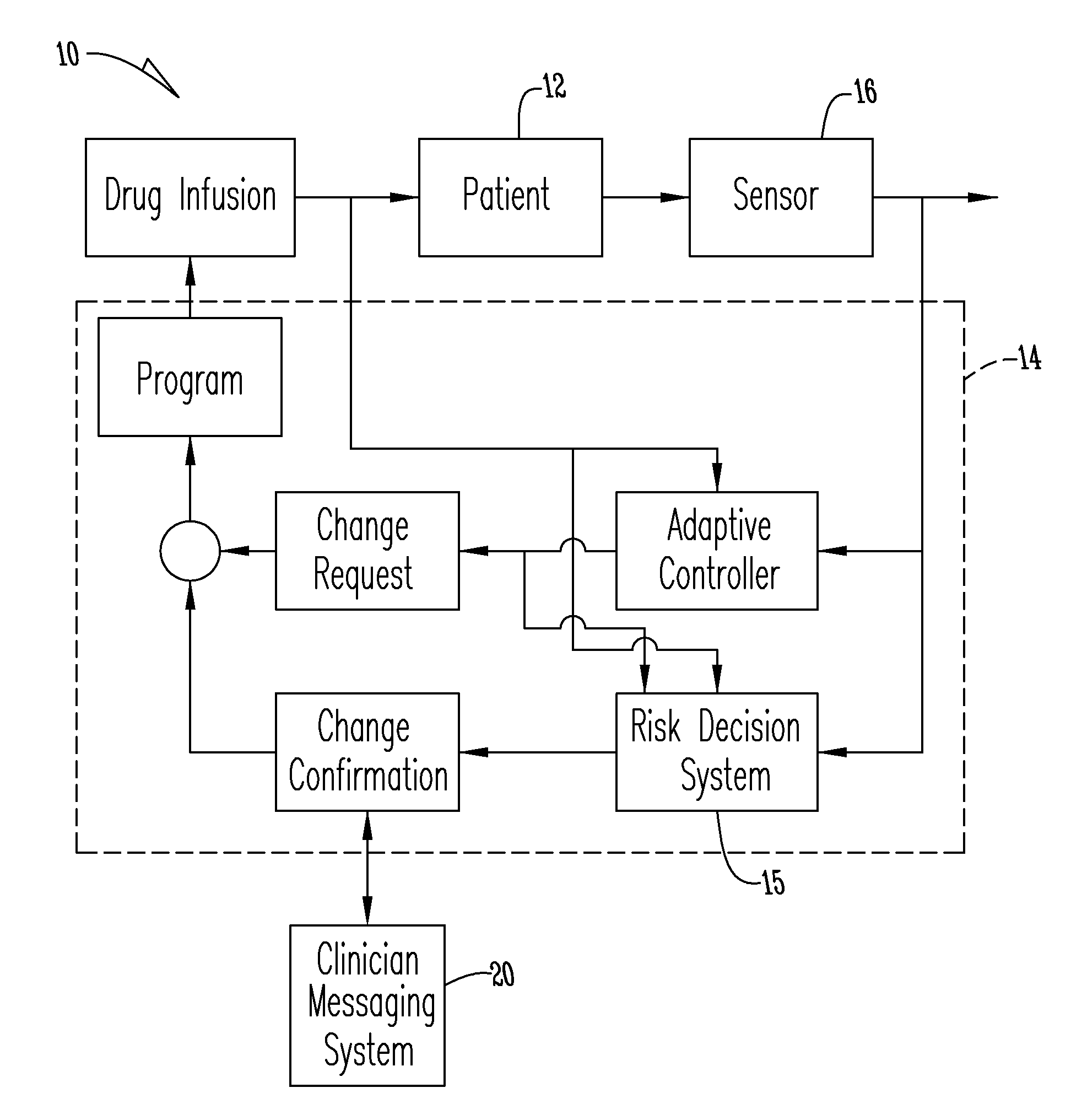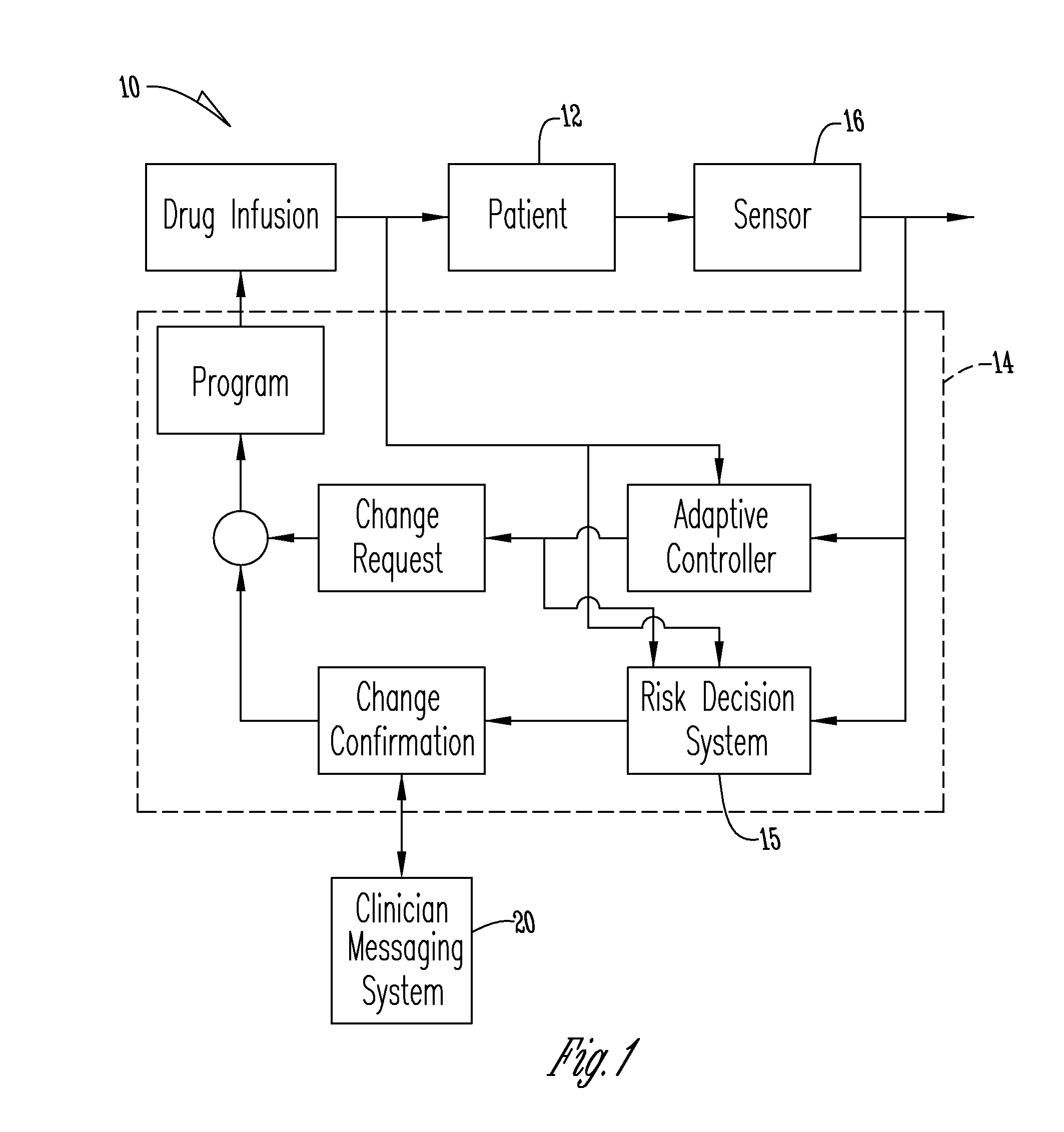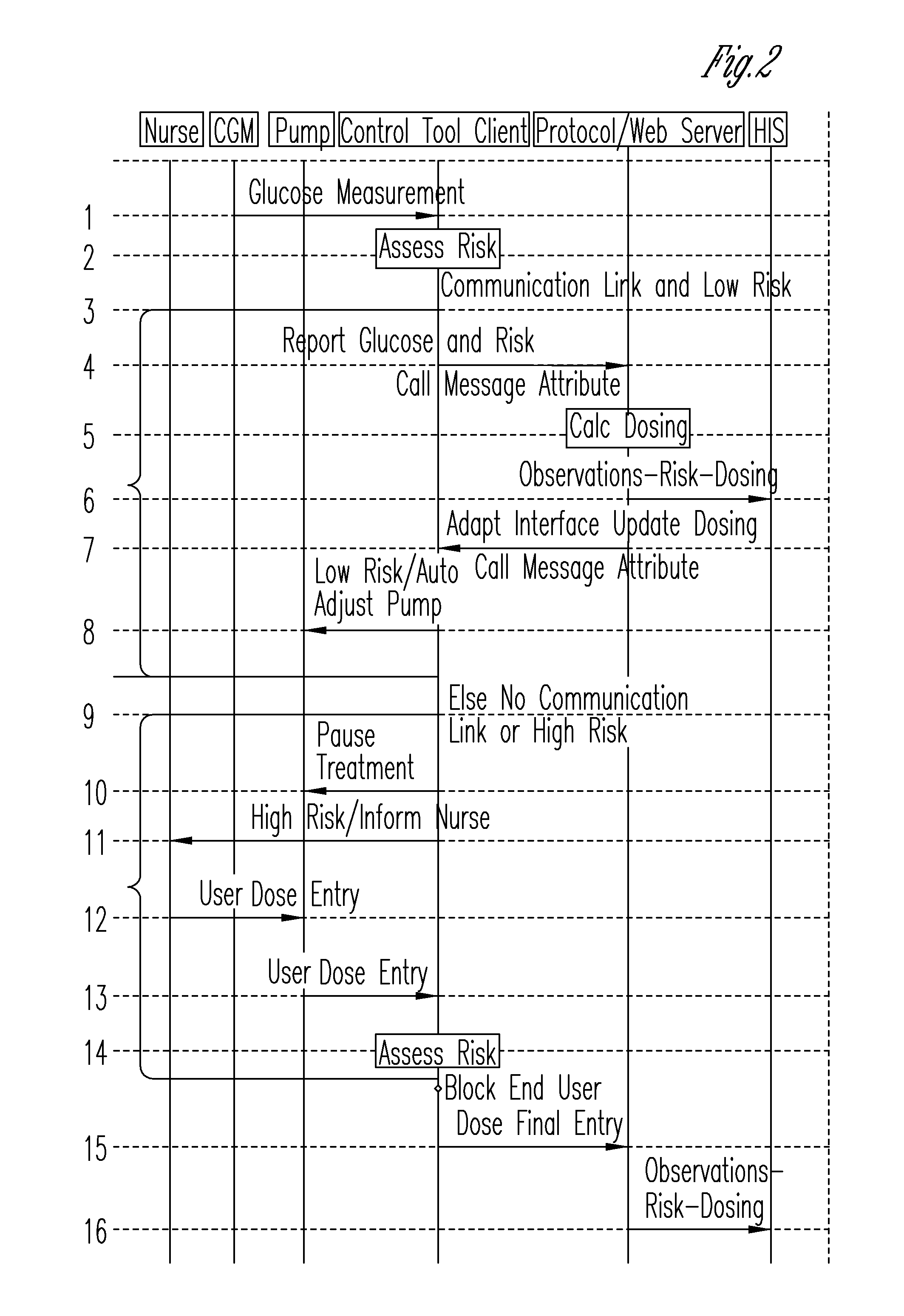System for monitoring and delivering medication to a patient and method of using the same to minimize the risks associated with automated therapy
a technology applied in the field of system for monitoring and delivering medication to a patient, can solve the problems of inability of patient or clinician to adjust insulin delivery, inability to control a patient's glucose level, and inability to properly utilize and metabolize carbohydrates, etc., to reduce the degree of automated therapy allowed, the effect of reducing the risk of potential adverse effects on the patien
- Summary
- Abstract
- Description
- Claims
- Application Information
AI Technical Summary
Benefits of technology
Problems solved by technology
Method used
Image
Examples
Embodiment Construction
[0022]FIG. 1 provides a system 10 for monitoring and delivering medication, such as insulin, to a patient 12. The system 10 includes a controller 14 that utilizes a control algorithm and an automation risk monitor 15 all presented in a closed loop. A sensor 16 is in communication with the controller 14 and monitors a medical condition of the patient 12. A rule based application 18 in the control receives data from the sensor 16 and compares the data to predetermined medical information to determine the risk to the patient 12 to automate the delivery of medication. The rule based application 18 in one embodiment includes physician or clinician entered conditions of when automation is acceptable. The system 10 is thus in communication with a clinician messaging system 20 that communicates to a clinician when the risk of automation is unacceptable. In a preferred embodiment the messaging system is remote from the system 10.
[0023]The rule based application 18 in one embodiment can inclu...
PUM
 Login to View More
Login to View More Abstract
Description
Claims
Application Information
 Login to View More
Login to View More - R&D
- Intellectual Property
- Life Sciences
- Materials
- Tech Scout
- Unparalleled Data Quality
- Higher Quality Content
- 60% Fewer Hallucinations
Browse by: Latest US Patents, China's latest patents, Technical Efficacy Thesaurus, Application Domain, Technology Topic, Popular Technical Reports.
© 2025 PatSnap. All rights reserved.Legal|Privacy policy|Modern Slavery Act Transparency Statement|Sitemap|About US| Contact US: help@patsnap.com



